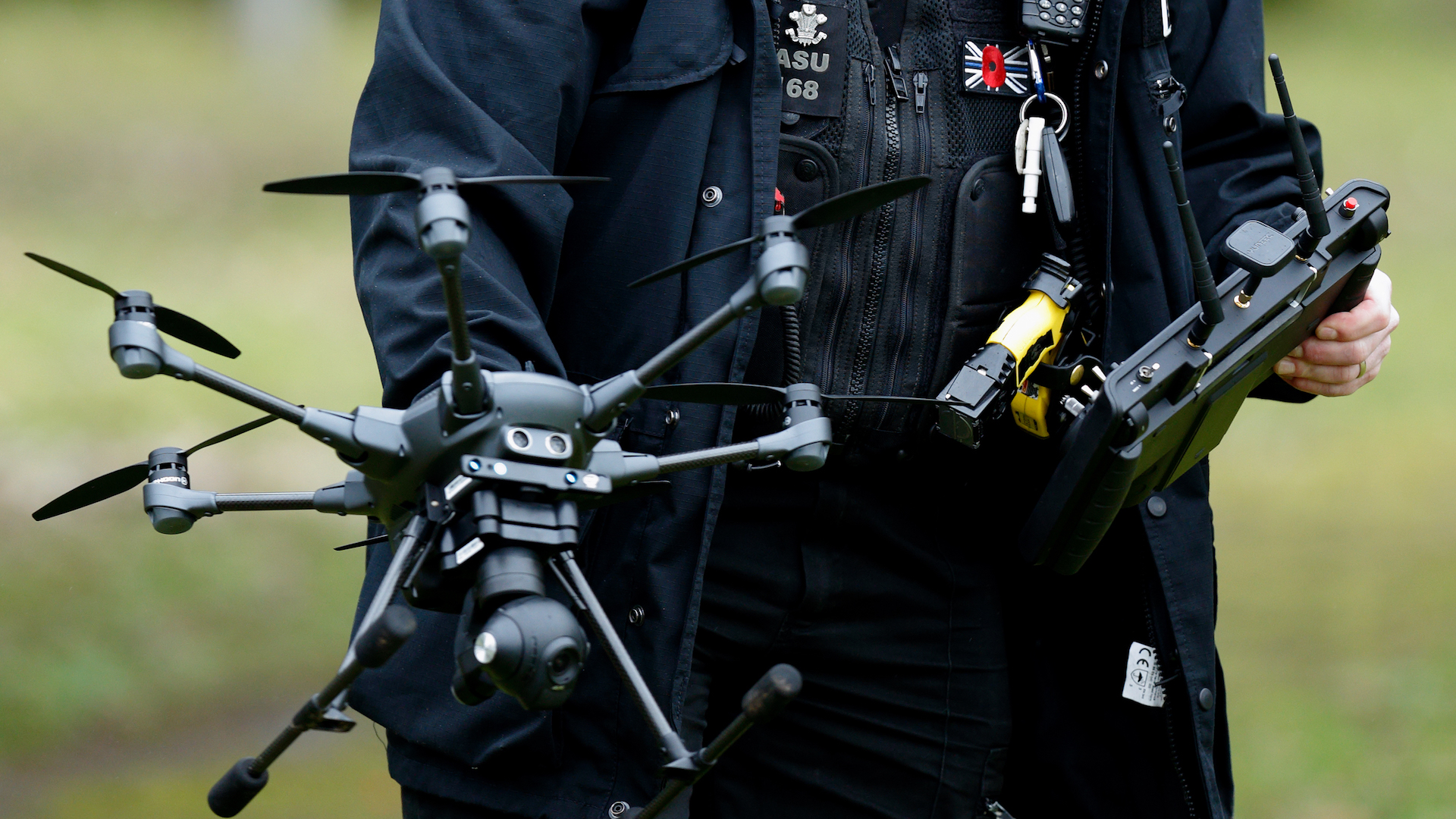

We’ve seen what sort of applications drones can be used for by for law enforcement. The wide range of uses, from catching illegal horse doping before a race, to police departments asking for weaponized drones, to considering post-emergency UAV usage in the aftermath of the Las Vegas shooting, drones are a tool like any other, and law enforcement is often on the forefront of implementing those tools before the public is. Fortunately, we have a new batch of data to glean some understanding from.
According to Dronefly, which analyzed data from a number of sources, unmanned aerial vehicles fitted with optical, zoom and/or thermal cameras are most appealing to law enforcement agencies. This makes perfect sense, as surveillance or approved footage requires a clear image of any law allegedly being broken for it to be used as evidence.
Drones, in general, are highly appealing to the police because UAVs can reach places that your local police officer can’t. That can range from a place too high to climb or a position simply too dangerous for an officer to put himself or herself in. In addition, drones can capture footage for days, provided the storage capacity of the drive is large enough. That can allow law enforcement to tend to other things, while the UAV takes care of recording valuable footage.
But what exactly are drones used for, mostly? In which scenarios are they most useful, or at least, statistically utilized? How can we improve law enforcement efficiency with this new tool of UAVs? Well, thankfully, Dronefly has put together a fantastic infographic that answers some of those questions. Let’s take a look, shall we?

As you can see, there are currently 347 U.S. agencies using drones as part of their of their approach in law enforcement. Some of these account for a staggering 518 percent increase in drone use in the past 24 months. But what are the most common areas drones are being used for, within these agencies?
Search and rescue scenarios are head and shoulders above all else. We’ve seen examples of this countless times, like when a hiker gets lost or when lifeboat crews test out new potentially-advantageous equipment. Next up, we have traffic collision reconstructions. Since drones can perch atop anything, record for hours, and don’t require constant attention from an operator thanks to their autonomous capabilities, they seem like a perfect fit for this job.
Thirdly, the active shooter scenario, one which is far too common, benefits hugely from drones. We’ve recently reported on certain persons involved in law enforcement from advocating the use of UAVs in these situations, while privacy and civil liberties-focused citizens strongly oppose that trajectory. The fact is, sending in a drone to investigate a highly-dangerous active shooter scenario is far safer for law enforcement, and can provide far more informative data, faster, than sending in a squad of police officers. It just makes sense. Similarly, and next on the list, is crime scene analysis with a bird’s eye view. This gives investigators another angle they might’ve missed on a traditional inspection.
Fifth in place, is, of course, general surveillance. It’s the eye in the sky, overlooking everything with high imaging quality. It’s affordable, efficient, and hugely appealing to those interested in surveilling the rest of us. This is a vast topic of huge, polarizing consequences, and better left for separate discussion. Let’s just say that some are strongly afraid to have this kind of technology fall into the wrong hands. Lastly, and similarly, is the crowd monitoring use of UAVs. This can give law enforcement a pristine look at any suspicious-looking members of a crowd during an event.
This infographic is hugely appreciated, as even myself haven’t actually ever pondered the order of use-cases. It really puts into perspective how UAVs are used, and where they might be most useful.